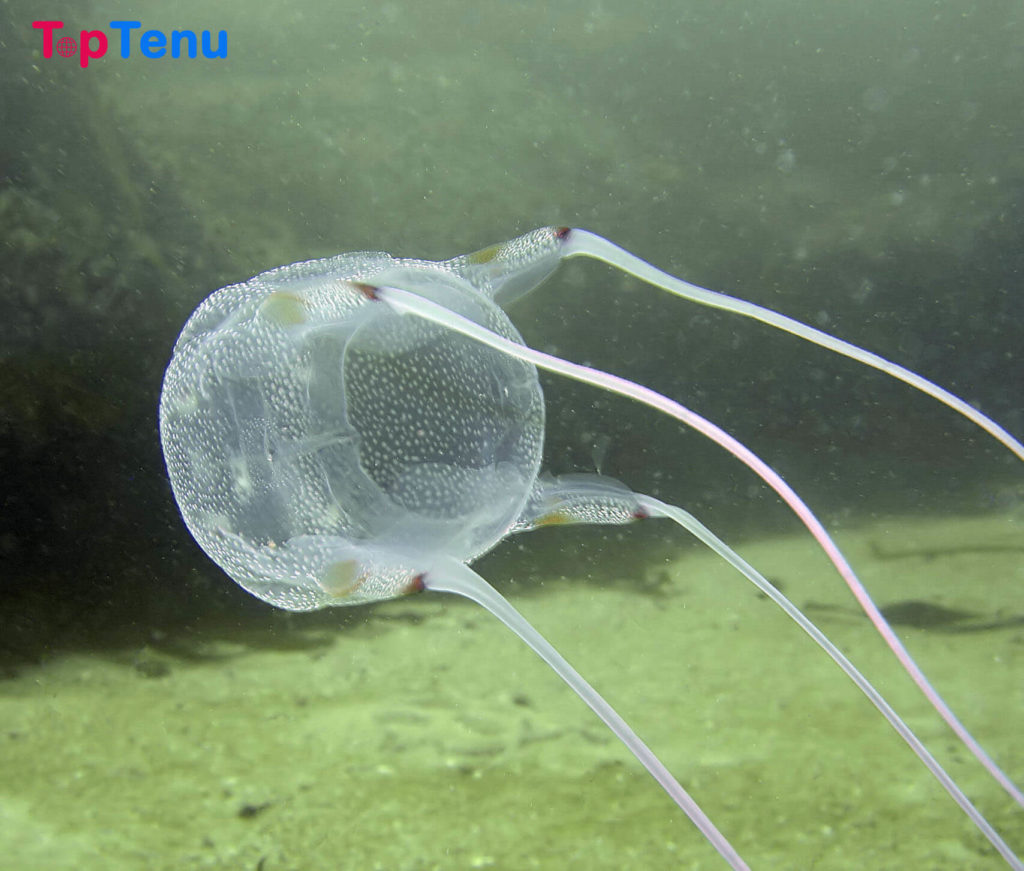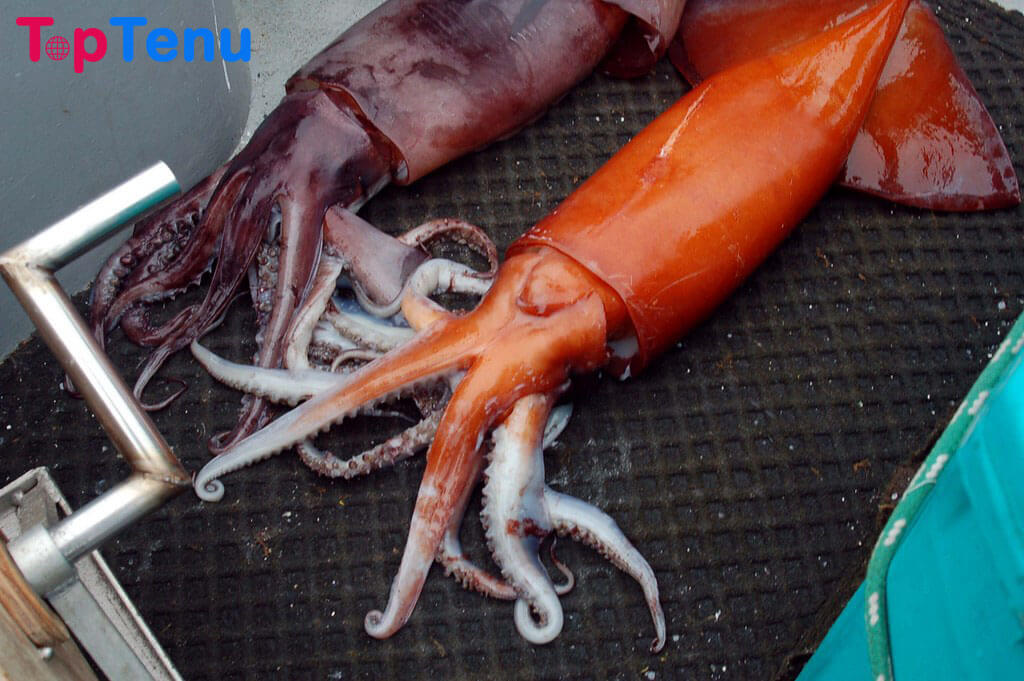Tongue-eating parasites, parasitic worms possessing hypnotic ability, amoeba destroying cornea… are the smallest but most dangerous creatures in the world.
Talking about parasites, we all imagine “microscopic” creatures that often live on the hosts’ body to suck nutrients or blood for the sake of their survival.
Not only do harm, but these parasites also have the ability to attack, defeat and even kill the hosts’ life.
So, let’s follow us to learn more about 7 types of parasites considered to be the scariest ones that can control their hosts’ brains!
Number 9: Zombie ant fungus
Previous studies indicated that a parasitic fungus has approached and operated nerve function to turn ants into zombies.
The zombie ants will be directed, wandering around and being ready to bite any animal according to the fungus’ order.
On this foundation, experts from the University of Munich (Germany) conducted research, analyzed and came to a conclusion regarding the fungus’ ability to identify their favorite “hosts”, that provided information about the molecular mechanism of that phenomenon.
Thereby, they understand more about how the fungus turns ants into zombies. The study concentrated on the fungus of the Ophiocordyceps genus.
It would release a special chemical that directly acts on the hosts’ nervous system in order to control their behaviors.
To be more specific, it turns ants into its slaves, that have to wander and devour leaf whenever receiving order.
Number 8: Gordian worm
One of its hosts is cricket. Gordian worm has to inhabit in water for the purpose of mating and reproduction. Crickets, by contrast, prefer dry land.
Therefore, when being mature enough, the worm secretes a protein that exerts a negative influence on the cricket’s navigation system.
As a result, the crickets jump wildly then move closer to the water and eventually fall into the water and get drowned.
At that point, the worm emerges from its hosts, beginning to mate and breed. Its eggs are the food of insects which then grow up, fly away and become the food of crickets.
Since then, the Gordian worm’s life cycle repeats. This worm is immensely tiny, only 2.5cm long and as thin as a pencil nib.
They stick together into clusters and “roam” on the cave walls and floors. Thanks to the transparent body, its red blood vessels can easily be seen.
Number 7 The worm protecting its host
Heterorhabditis bacteriophora is a porous earthworm. Unlike other parasites that usually damage their hosts, the worm protects parasitized animals by threatening predators.
When the worm poison larvae, they change the hosts’ outer color from white to red. The red acts as a warning to carnivorous predators.
In fact, it has been proven that an insects-eating red-whiskered bulbul often avoids the red ones. Parasitic worm has to rely on insects to survive, so it must try to protect the hosts like protect its own life.
Number 6 The sea acorn changing crabs’ gender
A young Sacculina carcini is a larva that floats along the water, but when parasitizing in a crab, the female larvae begins the transformation by sticking to the crab’s lower body and bending the crab’s shell.
She then spreads a kind of root-like tentacle all over her host and uses this web to catch food. After a while, the male Sacculina will come to the female one and mate.
The couple can give birth non-stop. At that time, the male crab became the reluctant servant who begins to take care of Sacculina’s eggs as if they were his own.
When the parasite “poisons” the male crab, it begins to sterilize the creature and flatten the host’s abdomen as well.
In addition, it forces the male crab to secrete several hormones that make the crab act like a female one, even jumping-which is considered only for crab females.
Number 5 The worm makes fish dance
The Euhaplorchis californiensis worm starts parasitizing on whiskers of the snails that inhabit in saltwater swamps in southern California.
In the hosts’ body, the worm begins to reproduce and then seek small larvae-eating fishes to continue its parasitizing life.
Once reaching a new fish, the Euhaplorchis californiensis worm would stay in the gills and then approach the victim’s brain.
Afterward, it creates a thin layer like a carpet there. The worm begins to secrete substances that permeate through the fish’s brain system.
The small fish then would perform various dances as well as become more “hyperactive” than usual.
Therefore, they are more likely to be attacked by birds, at 10 – 30 times higher than normal. Inside the bird that had just eaten the poisoned fish, Euhaplorchis californiensis eggs travel out along the bird’s waste, which then would be consumed by the snails, continuing the parasitic life circle.
Number 4: Toxoplasmosis – Crazy about cats syndrome
That’s right, you are not dizzy. A study showed that people infected with Toxoplasma gondii parasite (commonly found in cat poop) can be successful at a start-up as twice as a normal person.
Somehow, the creature can affect their mind, render them more “riskier” and ready to face business risks.
At least that is a reasonable hypothesis for that phenomenon. Experimental evidence in animals indicated that mice infected with Toxoplasma gondii become extremely courageous, thereby they lose their instinctive fear of cats.
In a new research published in the journal Proceedings of the Royal Society B, professor Stefanie Johnson from the University of Colorado points out that Toxoplasma is an immensely strange parasite. When getting in mice and humans’ brains, it can cause many mental effects.
Number 3 : Tongue-Eating Fish Parasites Never Cease to Amaze
Did you know? a parasitic crustacean that lives inside the mouths of fishes, eating–and then taking the place of–its host’s tongue.
After one of the males mates with the female, she gives birth to a brood of live male parasites. For their first few days, Cook found, they search madly for another host (each species of parasite seems to only live in a single species of fish).
They sniff for the scent of their host, and if a shadow passes overhead when the odor is strong, they shoot upwards through the water.
They burn through a lot of energy in the process; if they fail to find a host in the first few days, they settle down and hope they can ambush a fish that happens to be swimming by.
It’s a hard way to start your life, and it may explain why several males will huddle inside a fish with only a single female in the offing.
Looking for another fish with a single female parasite might be a less promising strategy than competing with the males you’re with.
Number 2: Acanthamoeba
Acanthamoeba is an extremely dangerous amoeba parasite found in soil, air, ponds, lakes, and oceans worldwide.
The parasite is known to cause Acanthamoeba Keratitis (which is a rare but serious infection of the eye that can result in permanent blindness), as well as GAE – Granulomatous Amebic Encephalitis (Brain and Spinal Cord Infection), or “Disseminated Infection.
” Left untreated, the amoeba is capable of affecting the skin and central nervous systems of its host with deadly consequences.
Although most people are exposed to the Acanthamoeba during their lifetimes, only a very few people will become ill after their exposure.
Although little is known about the parasite, researchers believe that it infects humans through the nasal passageways, eyes, or ulcerated/broken skin.
Depending on the infection, diagnosis of the parasite is often quite difficult, and is usually not noticed until the infection reaches advanced stages.
In individuals with GAE, swelling and inflammation of the lungs, sinuses, and brain are common, along with loss of coordination, mental duress, fever, muscle weakness, paralysis, double vision, and a host of various neurological problems
Number 1: Rabies virus eating humans’ brain
The virus is easily destroyed in lipid solvents and inactivated at 56 ° C within 30 minutes and at 70 ° C within 2 minutes.
Apart from that, the Rabies virus loses its virulence when it is under light and antiseptics at 2-5% concentration.
In the cold condition at 4 ° C, the virus can live from several weeks to 12 months, at below 0 ° C, from 3 to 4 years.
After entering humans’ bodies, the rabies virus develops from the innermost layer of subcutaneous tissue or from the muscle into peripheral nerves (the nerves outside the brain or spinal cord).
The virus then travels along the nerves to the spinal cord and brain at the speed of 12-24 mm per day.
People contracting the rabies virus would have behavioral changes and clinical symptoms as the virus begins to enter their brain.






